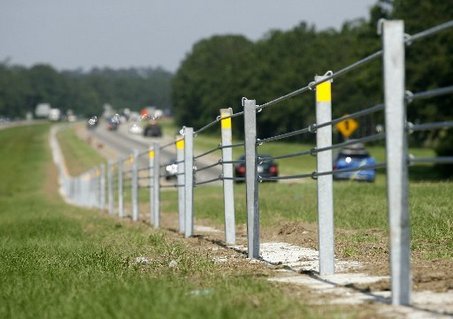Photo: Wisconsin DOT
A 68-page study released in May regarding the safety benefits of highway median cable barriers is expected to help the Iowa Department of Transportation expand the use of such safety devices to other divided roadways throughout the state.
The Iowa DOT began installing median cable barriers in 2003 and they are now currently in use along 330 miles of interstate highways statewide. This cable barrier study – conducted by the Center for Transportation Research and Education at Iowa State University – examined 6,718 median-related crashes over nine-year period, from 2007 to 2015, and determined that those safety devices reduced fatalities, incapacitating injuries and non-incapacitating injuries by 68.7, 36.8, and 23.9 percent, respectively, though “property-damage only” crashes jumped 95.4 percent, according to the collected data.
“Some of this increase is also attributable to nuisance strikes given the proximity of the barrier to the traveled highway,” the researchers noted in the study.
Yet Chris Poole, a safety programs engineer with the Iowa DOT, told the AASHTO Journal that the reduction in fatalities and injuries chronicled by the university’s research, should help the agency better evaluate whether to expand the use of median cable barriers to other roadway structures across the state.

“Right now we only use them on four-lane highways, but as they’ve proven effective, do we start expanding their use on other roadways where we have high traffic volumes? Though it is a little early yet, considering the safety benefit they’ve demonstrated, it’s something we’re looking at,” he said.
The study also noted that median crash barriers are “cost effective,” based on a comparison between crash cost savings with the installation and maintenance/repair costs over an expected 20-year lifespan for the devices.
“According to our results, the median cable barrier installation program provided an effective median treatment that reduces injury severity and represents a very favorable investment of financial resources,” the university’s researchers concluded.
 States
States


